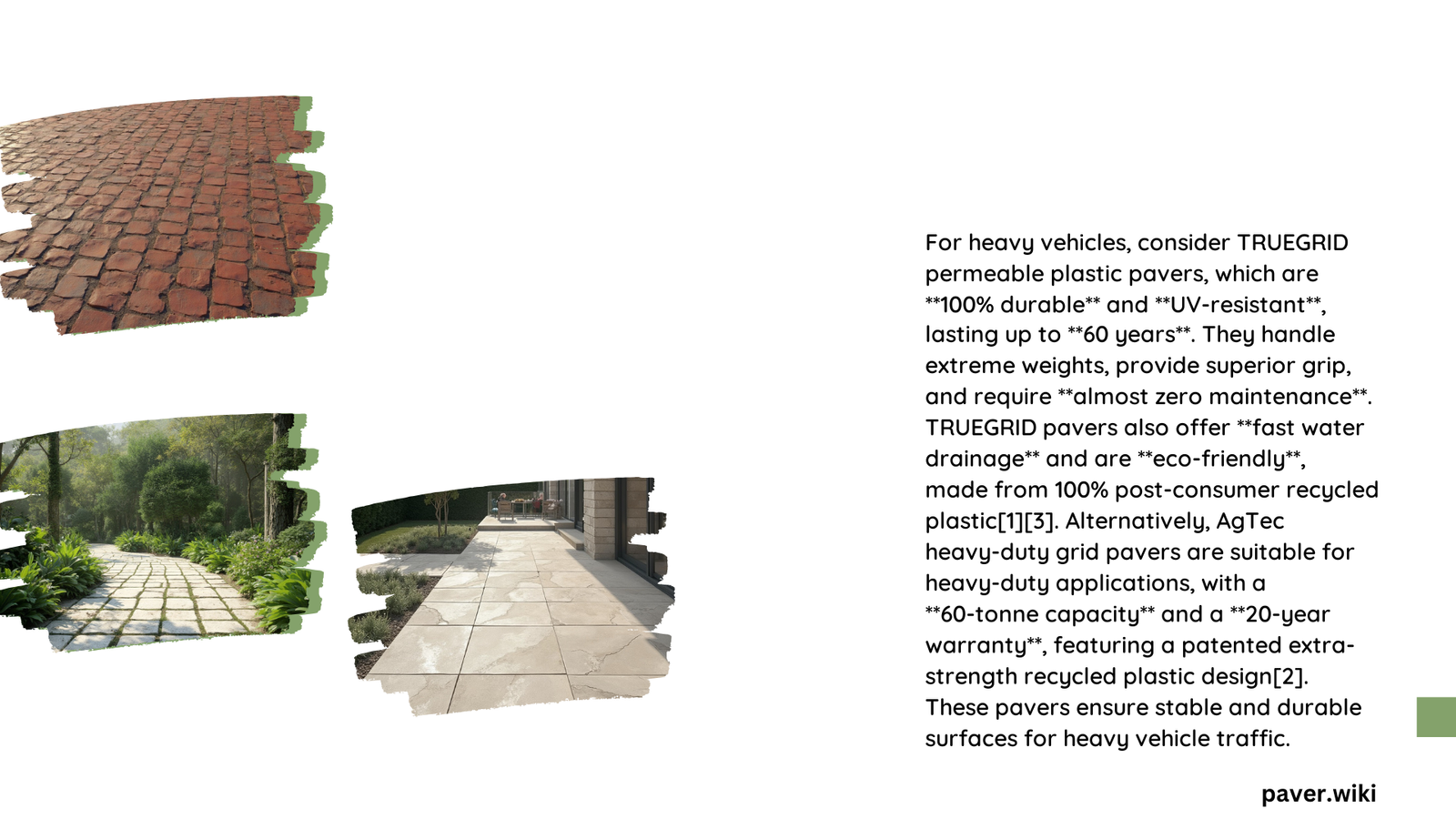Heavy vehicle infrastructure demands robust paving solutions that can withstand substantial weight, constant traffic, and environmental challenges. Modern pavers for heavy vehicles leverage advanced materials like recycled plastics, specialized asphalt mixes, and innovative cellular designs to provide exceptional load-bearing capabilities, ensuring durability, permeability, and long-term performance across commercial, industrial, and military applications.
What Are Pavers for Heavy Vehicles?
Pavers for heavy vehicles are specialized surface solutions engineered to support substantial weight loads from trucks, commercial vehicles, and industrial equipment. These systems utilize advanced materials and design techniques to distribute weight, manage drainage, and maintain structural integrity under extreme stress.
What Makes Pavers Suitable for Heavy Vehicle Load?
Load-Bearing Material Composition
| Paver Type | Material | Load Capacity | Typical Application |
|---|---|---|---|
| Ecoraster E50 | Recycled Plastic | 70,000 lbs/sq ft | Commercial/Industrial |
| AgTec Heavy Duty | Recycled Plastic Blend | 228,300 lbs | Military/Logistics |
| Asphalt Superpave | Stone-Asphalt Mix | 40,000-60,000 lbs | Transportation Infrastructure |
Key Performance Characteristics
- Durability: Engineered to withstand continuous heavy vehicle traffic
- Load Distribution: Cellular and interlocking designs minimize surface stress
- Permeability: Rapid water drainage prevents structural degradation
- Sustainability: Many solutions utilize recycled materials
How Do Interlocking Pavers Support Heavy Vehicles?
Interlocking pavers like Ecoraster E50 and AgTec utilize unique design features:
- Cellular Grid Structure
- Distributes weight evenly across surface
- Prevents individual paver displacement
-
Reduces potential for structural failure
-
Material Resilience
- UV and frost-resistant compositions
- 20-year warranty standard
- Minimal maintenance requirements
What Installation Techniques Enhance Paver Performance?
Successful heavy vehicle paver installation involves:
- Geotextile Fabric Underlayment
- Provides additional stability
- Prevents sediment migration
-
Enhances drainage capabilities
-
Proper Base Preparation
- Compacted aggregate layers
- Precise grading
- Drainage considerations
What Are Cost Considerations for Heavy Vehicle Pavers?
Cost factors include:
- Initial Installation: $3-$10 per square foot
- Long-Term Maintenance: Minimal with proper initial setup
- Expected Lifespan: 15-30 years depending on design and usage
What Challenges Do Heavy Vehicle Pavers Address?
- Erosion Prevention
- Stormwater Management
- Weight Distribution
- Surface Stability
- Environmental Sustainability
Recommended Applications

- Trucking Terminals
- Warehouse Loading Zones
- Military Installations
- Logistics Centers
- Industrial Yards
Technical Specifications to Consider
When selecting pavers for heavy vehicles, evaluate:
– Maximum load-bearing capacity
– Material composition
– Drainage rates
– Installation complexity
– Environmental resistance
Emerging Technologies
Ongoing research focuses on:
– Advanced recycled materials
– Enhanced cellular designs
– Smart infrastructure integration
– Increased load-bearing capabilities
Conclusion
Selecting appropriate pavers for heavy vehicles requires comprehensive understanding of load requirements, environmental conditions, and long-term performance expectations.
